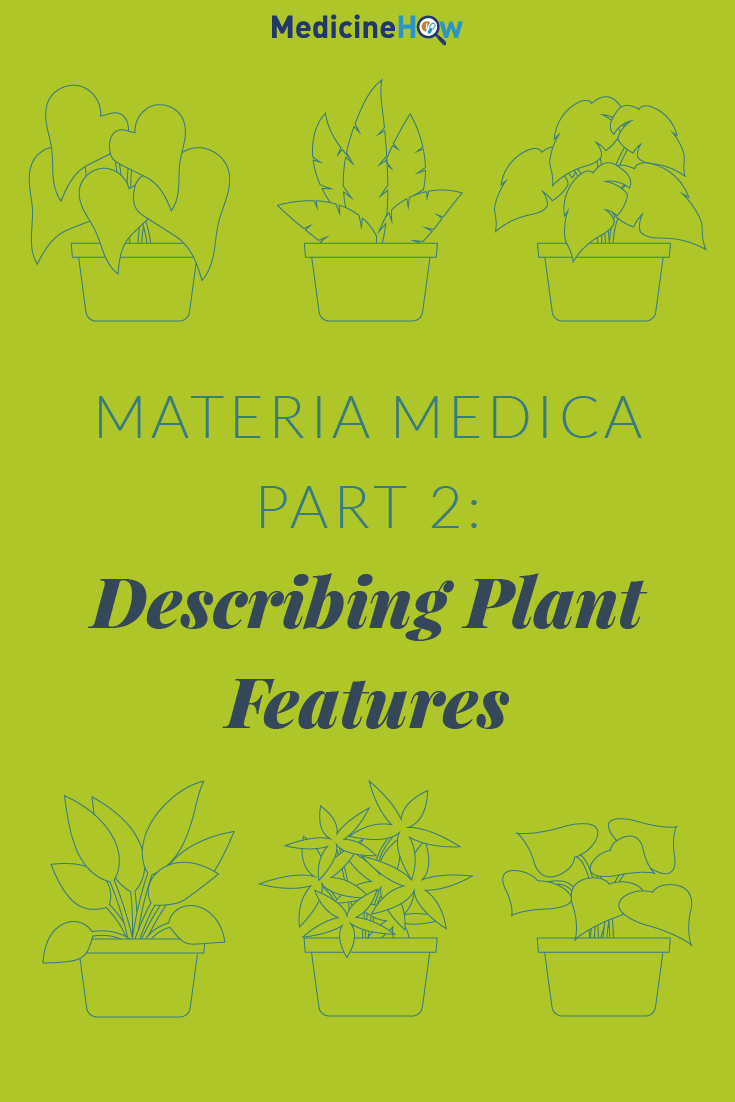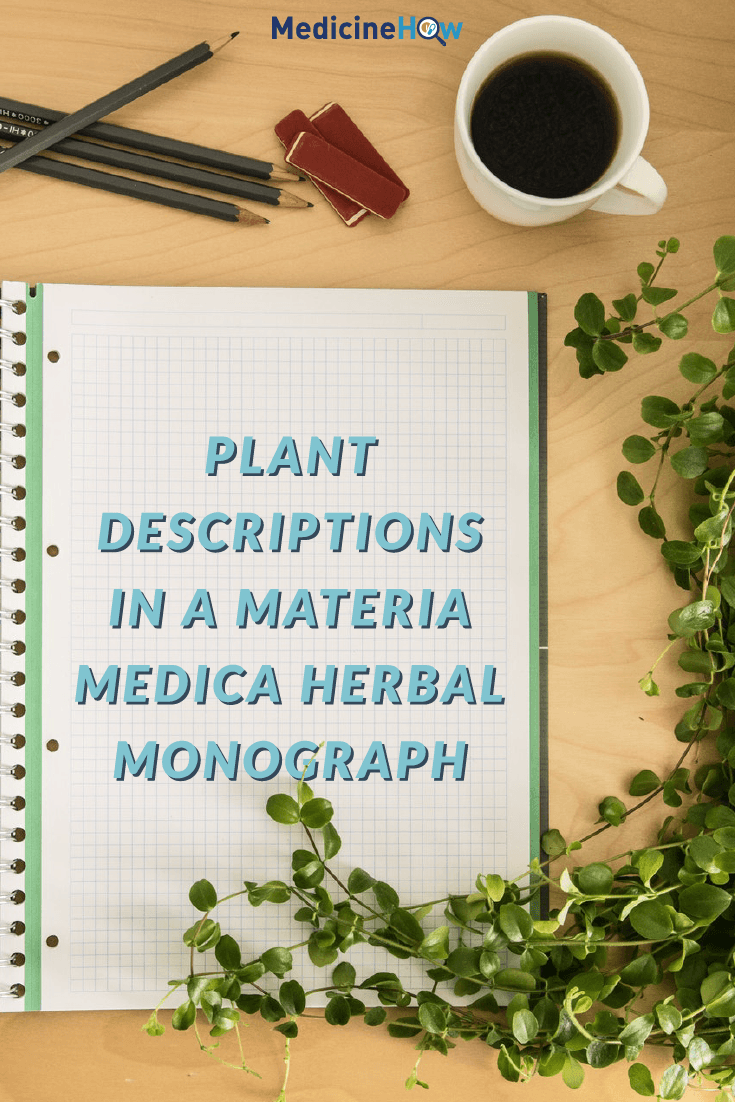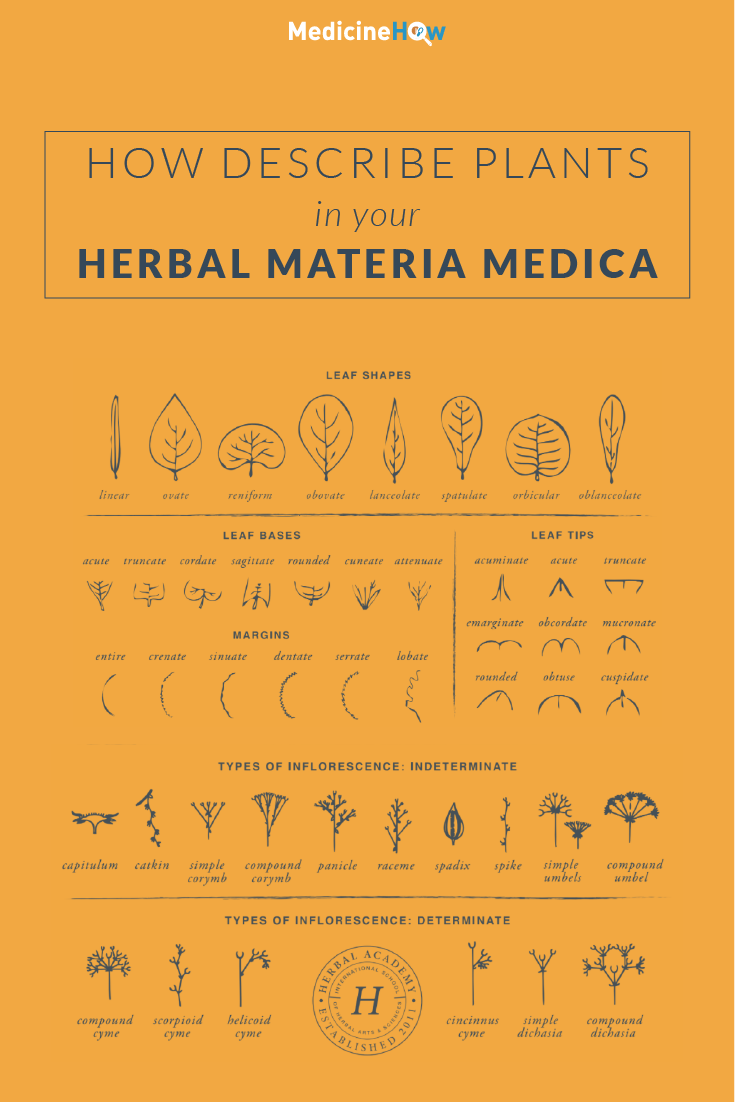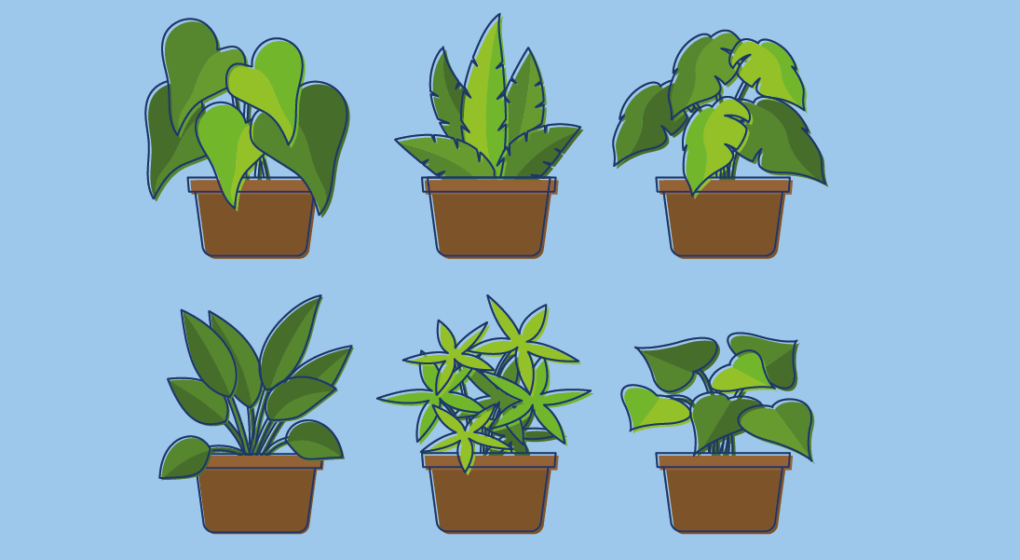
With the hundreds of thousands of species of plants in the world, it can be difficult to differentiate each one from the next. This is why specialists in plants have come up with specific terms to describe certain features of plants to recognize one from the next.
As a student of the Herbal Materia Medica Course by The Herbal Academy I’m learning how to describe plants so that I can better understand how and why they are used. I’ve got a lot out of it so far, so I thought I’d share some of the main insights with you here.
This post contains affiliate links. If you purchase a product after clicking on the link, we will receive a commission at no extra cost to you. Thanks for your support!
Native Region, Geographic Distribution and Habitat
Knowing where a plant comes from, where is grows now and the sort of conditions that it thrives in helps to understand more about its nature.
An herbal monograph usually includes information about a plant’s:
- Native region, history and culture
- Preferred growing conditions
- Sustainability in the wild
- Conditions for cultivation
Some plants tend to grow in very specific regions while others spread easily to other parts of the world. Some are commonly grown in gardens, whereas others tend to be found more commonly in the wild, even outside of their native region. Each of these characteristics provides clues about the history, culture and adaptability of the plant, which is important to include in an herbal monograph.
Additionally, more information about how and where the plant likes to grow is useful. For example, the amount of sun, water and type of soil it prefers is also usually included in a medica media herbal monograph.
Botanical Description of Plant Leaves
Botanists use special terminology to describe the shape and position of leaves on a plant, which help to identify the plant and recognize it from other species.
Here’s a graphic to show some of the different shapes and the words to describe them, taken from inside the Herbal Materia Medica course. There are different terms to describe each part of the leaf:
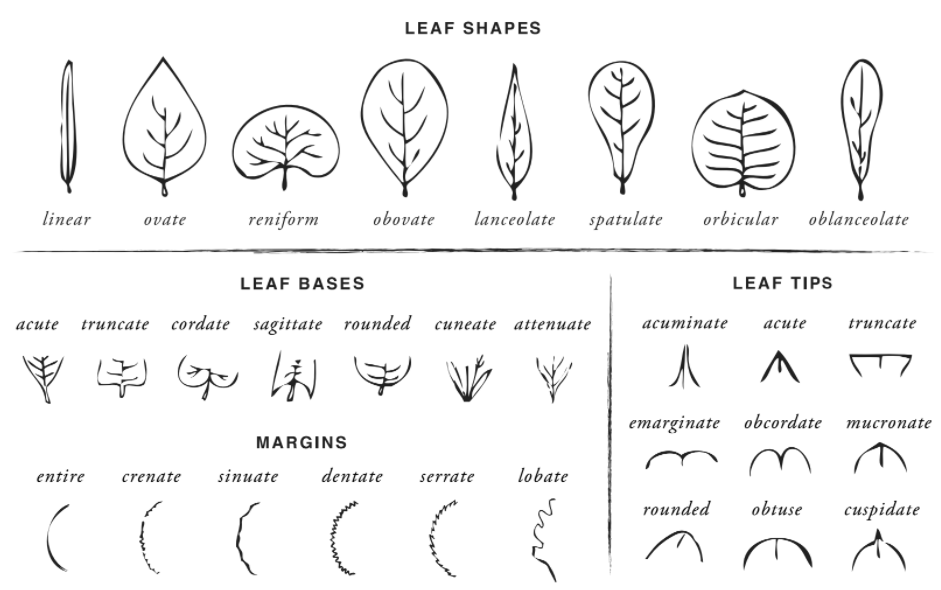
As you can see there’s a lot of new words to get your head around. A picture is definitely worth a thousand words!
For example, a cordate leaf is heart shaped with a sharp tip and two rounded parts at the base of the leaf. A laneolate leaf is quite long, with a thinner tip than base, whereas a linear leaf is also long and narrow but the width is the same at both ends.
The edge of the leaf, called the margin, is also another factor in the shape of leaves. An entire leaf has a smooth margin without any teeth or other textures on its edges. Other leaves may be described as crenate, sinuate, dentate, serrate or lobate.
Being able to recognize the different shapes is important because in some cases it is one of these small features that sets one species of plant out from another.
If you’d like to know more about describing leaves, see this post by The Herbal Academy.
Botanical Description of Flowers
Flowers are another useful thing to describe when making notes about a plant in your material medica.
There are four parts to flowers that are described as “complete”: stamen, pistil, petals and sepals. If flowers don’t have one of these four main parts, they are described as “incomplete”.
Many plants have inflorescence, which is a cluster of flowers that grow together on stems and stalks. Inflorescence can be either indeterminate or determinate, depending on whether the youngest flowers are at the top or the bottom of the cluster of flowers. There are also various terms to describe the different types of clusters, as shown in this graphic from the Herbal Materia Medica course: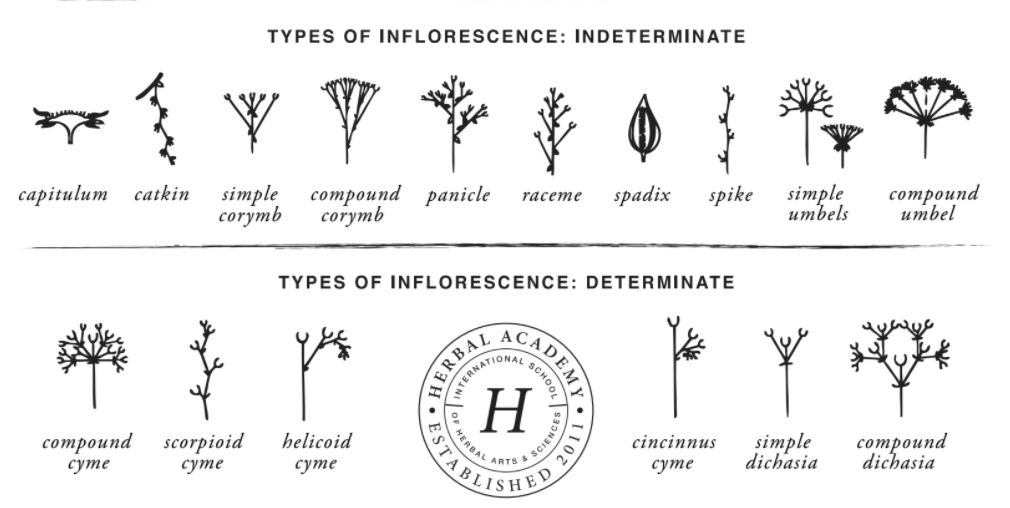
Other Ways to Describe Plants
There are also many other things that you might record in a material medica herbal monograph.
For example, you might write about the type of root system the plant has, such as taproot or spreading rhizomes. Another useful characteristic to make note of is the way it grows: the plant may be erect, sprawling, climbing or creeping, for example.
Additionally, you can include information about the size of the plant and it’s lifespan, whether it is an annual, biennial or perennial plant.
What to Record in Your Own Materia Medica
When it comes to making your own material medica with the plants that you become familiar with, it’s best to record information that is meaningful to you.
Use words to describe the plants as best you can, but often sketching out a picture of the parts of the plant will help you to understand the shape more easily, particularly if all the terminology is very new for you. Start with a few simple words and you can grow your vocabulary from there as you go!
Learn More About Plant Description in a Herbal Monograph
If you’re interested in learning more about how to describe plants and create your own material medica, I highly recommend the Herbal Materia Medica Course by The Herbal Academy. I recently worked through this course myself and am sharing the insights I got in this series of posts. Here are a few of the others I’ve written so far:I’ve genuinely found the course helpful to get a better understanding about herbal medicine and the properties of different plants. If you’re interested in finding out more – or enrolling to learn alongside me – you can register for the course below.
Pin it!
